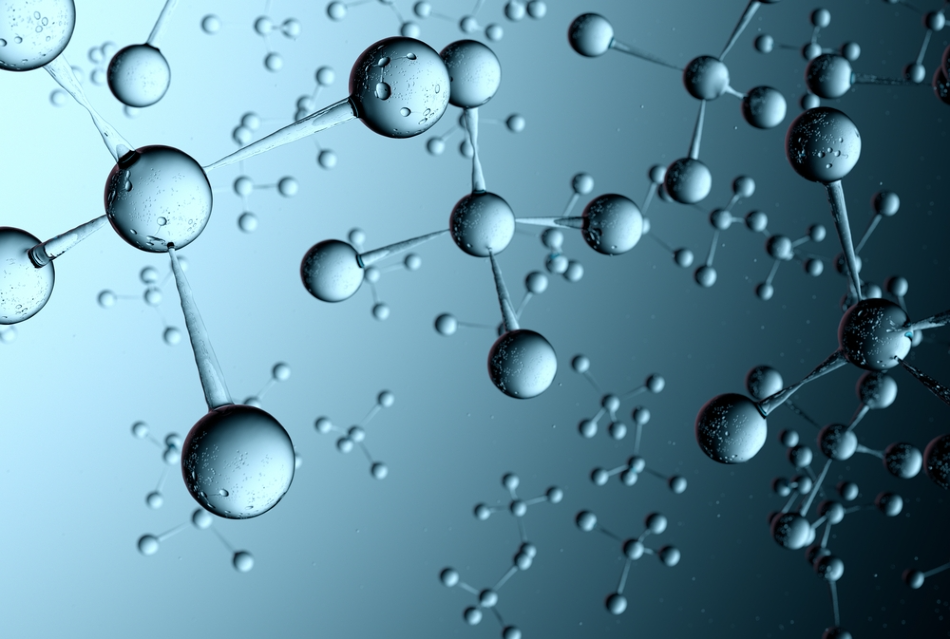
Image Credit: Efman/Shutterstock.com
Microbial nanowires possess electrically conductive filaments (pili) that are capable of extracellular transfer of electrons over long distances. The nanowire networks can convert organic compounds to methane in microbial fuel cells.
Geobacter is a microbe that has the unique ability to produce magnetite in the absence of oxygen. This property has led researchers to develop bacterial nanowires with electrical conductivity.
Geobacter sulfurreducens nanowires are commonly studied models for the electron transport system in microbial cells. The pili present in these bacteria have metal-like conductivity. The nanowire networks of Geobacter species are involved in direct interspecies electron transfer, which may be the mode of conversion of organic compounds to methane (bioenergy). In Shewanella oneidensis nanowires, electron transfer occurs via electron hopping/tunneling between cytochromes present in the filaments.
An increase in the production of nanowire is only possible with the improvement in bacterial strains through genetic manipulation. Improved bacterial strains could upgrade the current-producing capabilities of the bacteria.
Generation of Electricity from Moisture in the Air Using Microbial Nanowires
The energy generated from solar cells, mechanical generators, and thermoelectric devices have significant limitations that include the place where it can be used and the availability of continuous power. The production of energy from environmental sources could be a promising green sustainable alternative.
The omnipresent atmospheric moisture acts as an excellent source for the production of energy. However, the main drawback of the moisture-based energy production system is its inconsistency in power generation due to the absence of a sustainable conversion method.
A team of researchers at the University of Massachusetts, Amherst, has developed a device consisting of a protein nanowire to produce electricity from the humidity present in the atmosphere.
This is a thin film protein nanowire device developed from the Geobacter sulfurreducens that can efficiently generate electric power continuously with the help of atmospheric moisture.When the thin film (7-micrometer thickness) protein nanowire is naturally exposed to atmospheric moisture, a continuous electric current of approximately 0.5 volts containing the current density of around 17 microamperes per square centimeter is produced.
The combination of surface chemistry of the protein nanowires and the electrical conductivity, along with fine pores between the nanowires, determines the conditions that are required for the production of an electrical current between the two electrodes.
Find out about the types of equipment used to determine surface topography at subnanometer resolution.
Several devices are connected linearly to maximize the voltage and current generated, providing continuous energy to electronic appliances. This technology has successfully overcome the earlier discussed limitations of the existing sustainable methods of energy production.
As reported in Nature, the researchers have named this device "Air-gen" or air-powered generator.
The invention of Air-gen is an interdisciplinary collaboration of microbiology and electronic engineering. More than 30 years ago, Geobacter was discovered from Potomac River’s mud, and it is today the founding factor of Air-gen. The application of protein nanowire developed from Geobacter to electronic devices is a path-breaking piece of research.
Air-gen links the electrodes to the protein nanowires to produce an electric current from the natural humidity present in the atmosphere.
Scientists claim that the development of Air-gen is one of the most prominent applications of protein nanowires developed from Geobacter.
Click here to find out more about nanomaterials.
Jun Yao and Derek Lovley, researchers at the University of Massachusetts Amherst, claim that Air-gen is a pollution-free and economical device that utilizes renewable sources (moisture from the air).
The device is also able to produce electrical energy in regions with remarkably low humidity, for example, the Sahara Desert.
Advantages of using Air-gen
A major advantage of Air-gen is that the production unit is independent of the place, i.e., electrical power can even be generated indoors. This is not the case in several existing models of power generation from renewable energy sources, as they require either solar or wind energy, which compels the production unit to be strictly set outdoors.
Researchers are currently focusing on improving the current generation Air-gen, which is now only able to power small electronics, and they are hoping to commercialize their invented product soon.
Learn more here about nanoparticle characterization systems.
Yao’s laboratory is concentrating on the development of a small Air-gen "patch”, which could power wearable electronics that include smartwatches and health and fitness monitors. This would eliminate the need for batteries.
Researchers are keen to make more advancements in Air-gen that could be integrated into cell phones, reducing the frequency of charging.
Scientists are also planning to incorporate this technology into wall paint that could provide electric current to the home. Yao's laboratory has not limited the applications of protein nanowire to the Air-gen. They believe that this is just the first step to the opening of a new era of protein-based electronic devices.
References and Further Reading
Liu, X., Gao, H., Ward, J.E. et al. (2020). Power generation from ambient humidity using protein nanowires. Nature. 578, 550–554. https://doi.org/10.1038/s41586-020-2010-9
University of Massachusetts Amherst. (2020, February 17). New green technology generates electricity 'out of thin air': Renewable device could help mitigate climate change, power medical devices. ScienceDaily. Available at: https://www.sciencedaily.com/releases/2020/02/200217112730.htm
Malvankar, N.S. and Lovley, D.R. (2014). Microbial nanowires for bioenergy applications. Current Opinion in Biotechnology. 27,88-95. https://doi.org/10.1016/j.copbio.2013.12.003
Disclaimer: The views expressed here are those of the author expressed in their private capacity and do not necessarily represent the views of AZoM.com Limited T/A AZoNetwork the owner and operator of this website. This disclaimer forms part of the Terms and conditions of use of this website.